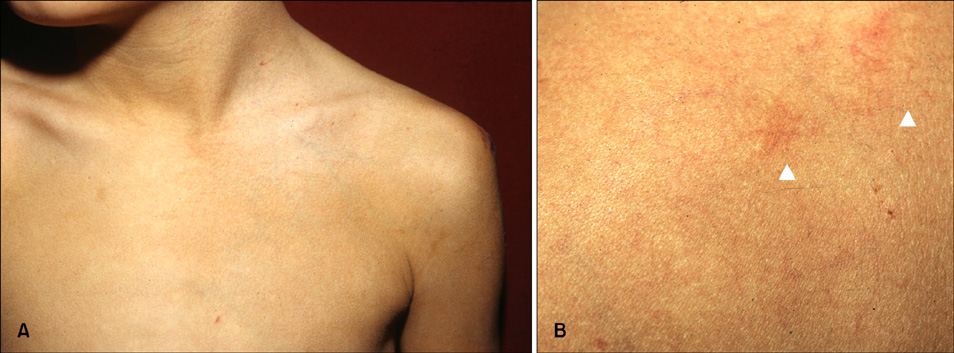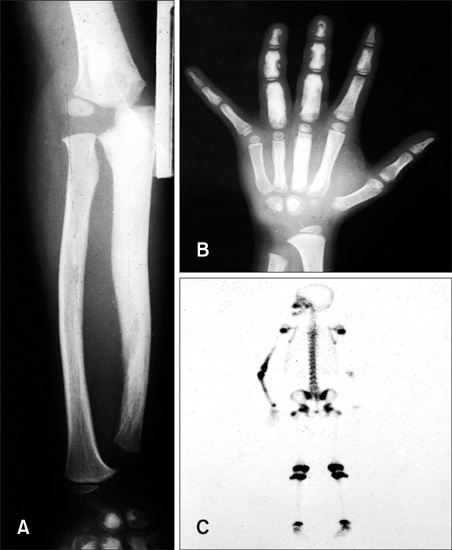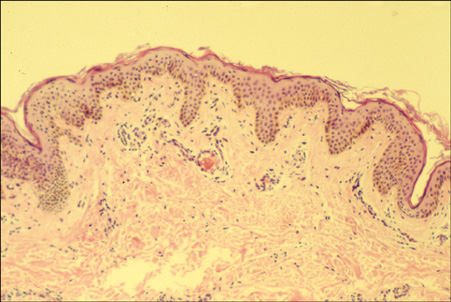Ann Dermatol.
2012 May;24(2):206-208.
Unilateral Nevoid Telangiectasia Associated with Ipsilateral Melorheostosis
- Affiliations
-
- 1Department of Dermatology and Cutaneous Biology Research Institute, Yonsei University College of Medicine, Seoul, Korea. dbang@yuhs.ac
Abstract
- Melorheostosis is a rare disorder characterized by irregular, flowing hyperostosis in long bones, commonly described on radiographs as wax flowing down a candle. In addition to bony sclerosis, cutaneous manifestations overlying the involved bones have been reported including linear scleroderma, neurofibromatosis, and vascular and lymphatic malformations. Unilateral nevoid telangiectasia (UNT) is a rare primarily cutaneous condition characterized by linearly arranged small dilated blood vessels in dermatomal or Blaschkoid patterns on the skin. Here, we present the case of a nine-year-old Korean male with UNT associated with ipsilateral melorheostosis.
Keyword
MeSH Terms
Figure
Reference
-
1. Leri A, Joanny JP. Une affection non décrite des os: hyperostose "en coulée" sur toute la longueur d'un membre ou "mélorhéostose". Bull Mem Soc Med Hop Paris. 1922. 46:1141–1145.2. Taylor DR. A case of melorheostosis with associated linear cutaneous vascular malformation. Clin Exp Dermatol. 1981. 6:47–51.
Article3. Kawakami T, Kimura S, Soma Y. Unilateral nevoid telangiectasia on the lower extremity of a pediatric patient. J Am Acad Dermatol. 2010. 62:528–530.
Article4. Morris JM, Samilson RL, Corley CL. Melorheostosis. Review of the literature and report of an interesting case with a nineteen-year follow-up. J Bone Joint Surg Am. 1963. 45:1191–1206.5. Miyachi Y, Horio T, Yamada A, Ueo T. Linear melorheostotic scleroderma with hypertrichosis. Arch Dermatol. 1979. 115:1233–1234.
Article6. Murray RO, McCredie J. Melorheostosis and the sclerotomes: a radiological correlation. Skeletal Radiol. 1979. 4:57–71.
Article7. Youssoufian H, Pyeritz RE. Mechanisms and consequences of somatic mosaicism in humans. Nat Rev Genet. 2002. 3:748–758.
Article8. Uhlin SR, McCarty KS Jr. Unilateral nevoid telangiectatic syndrome. The role of estrogen and progesterone receptors. Arch Dermatol. 1983. 119:226–228.
Article9. Happle R. Mosaicism in human skin. Understanding the patterns and mechanisms. Arch Dermatol. 1993. 129:1460–1470.
Article




